TECHNOLOGY
ARA is a technology about consumers. It provides marketers with knowledge about an important part of their functioning, crucial for brands' decisions on OOH advertising communication.
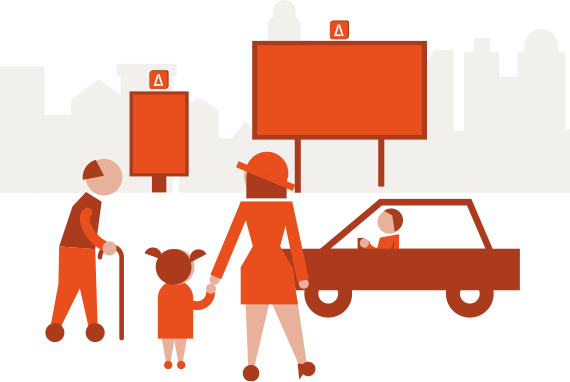

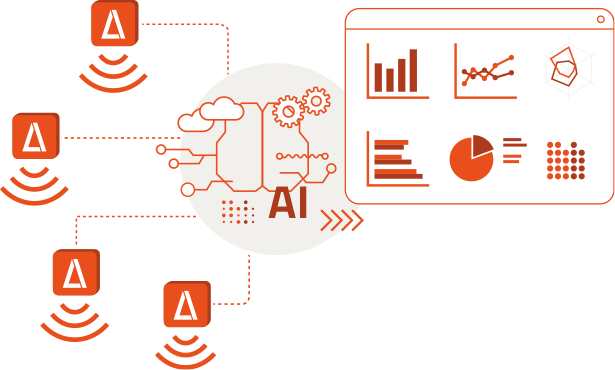
We deal with knowledge about the audience of digital OOH campaigns
We give you precisely measured value.
BLINDSIGHT AND DATA SECURITY
ARA technology is based on the concept of blindsight.
Blindsight is a term borrowed from medical sciences, describing a state as 'I perceive a stimulus, recognize its features, can describe it verbally, and yet I am convinced that I see nothing.' Blindsight in ARA technology means obtaining useful data without recording the image. ARA uses devices that perform immediate data anonymization before the data is passed on for further analysis.
Thanks to blindsight, data is collected in a way that guarantees privacy, i.e., in compliance with GDPR provisions. A recognizable image is not recorded at any stage!

area within the device's range
sensor destroying the image
unreadable image
algorithm
valuable information about the image
ARA SENSOR
The ARA sensor is a measurement device connected to a central system for aggregating data from streets and other out-of-home locations. DOOH screens or other forms of digital communication media are equipped with these sensors.
Each ARA sensor operates within a range of 10 meters from the medium and in a 150-degree arc. The sensor's operation depends primarily on the ambient light level, including weather conditions. Physically, the sensors enable determining attributes such as: number of people/objects, screen contact time, gender, age, and then aggregate the results and enable their analysis. It is worth mentioning that with technological development, the measurement devices are systematically improved, increasing their capabilities for aggregating and analyzing data.
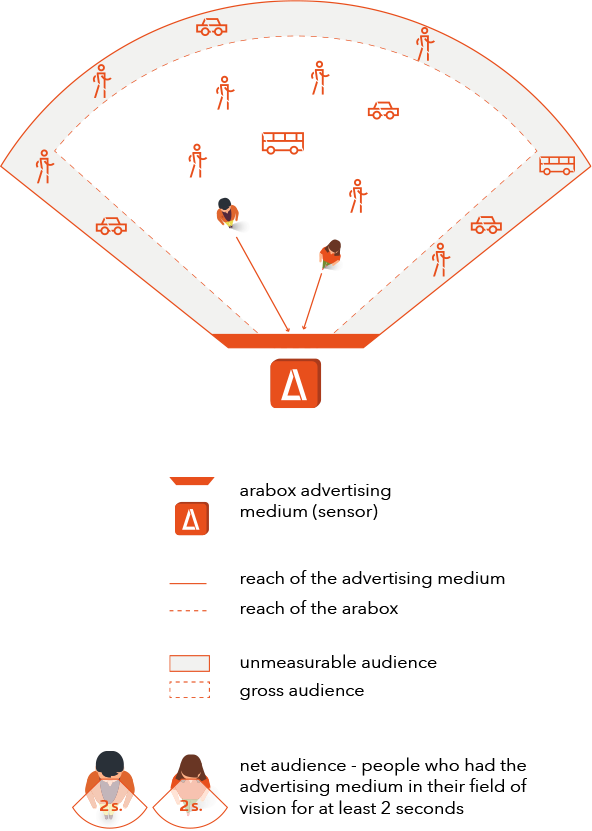
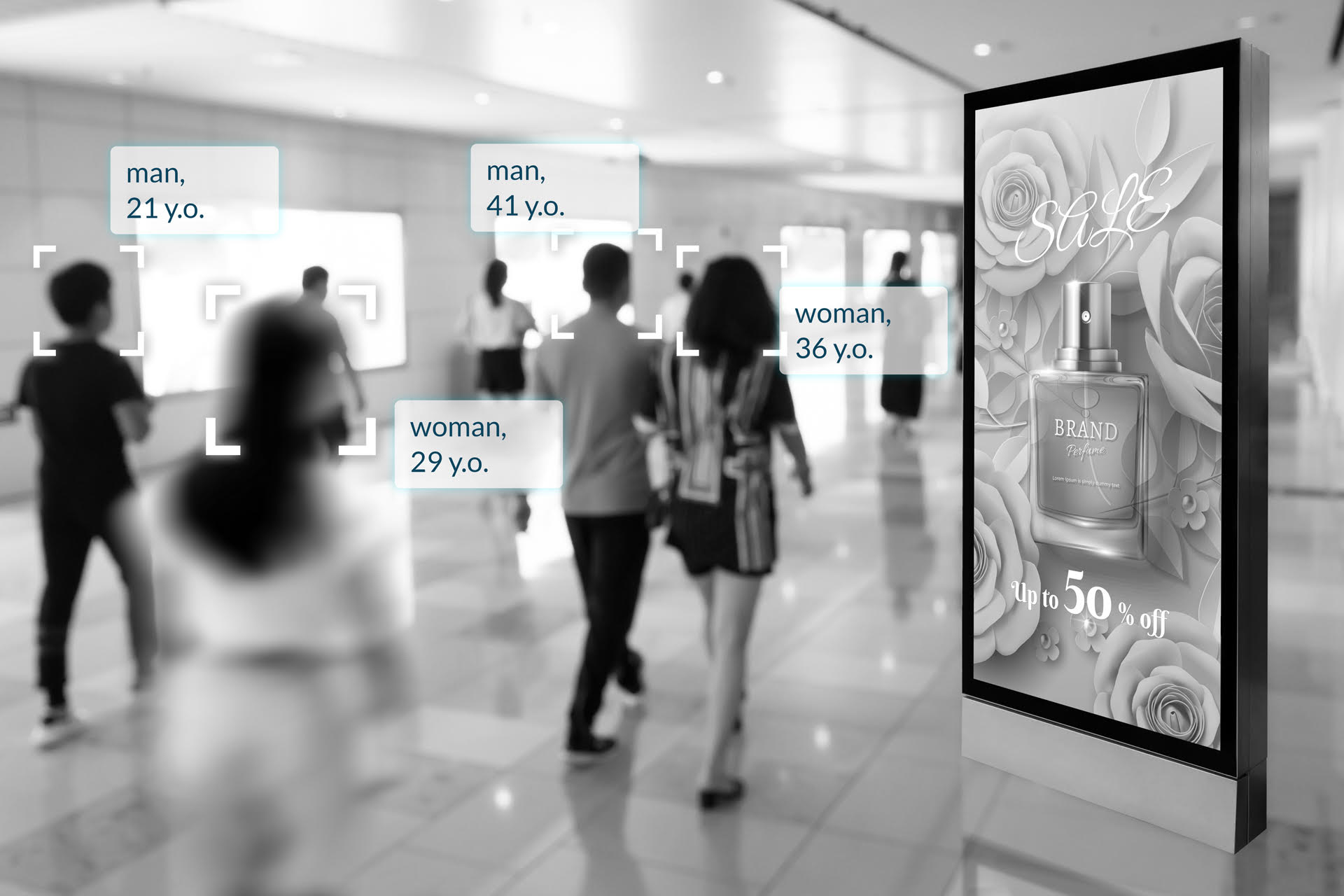
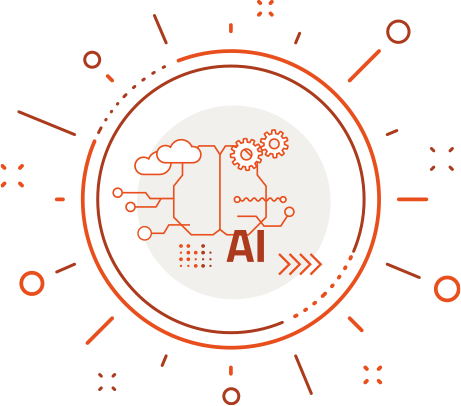
FUNCTIONALITY AND POTENTIAL
Digital OOH networks have long known the power of communication tools.
Thanks to knowledge from ARA.tech you can engage your ad audience more and design activities even better. See what ARA can do and let's talk about how you can use it in your company. We are constantly developing and will soon add new, useful features for your business. Let's stay in touch!
viewer movement paths (ability to analyze queue lengths, etc.)
audience prediction
advanced analytics
dashboard (ARA platform)
ability to export data to an external system (via API)
distinguishing attributes (gender, age)
vehicle counting
real-time operation
time spent by the viewer in a given zone or within sensor range
ability to export data to an external system (via API)
programmatic DOOH tool
engine adapting the ad message to the current audience
live campaign management system depending on the level of assumption fulfillment
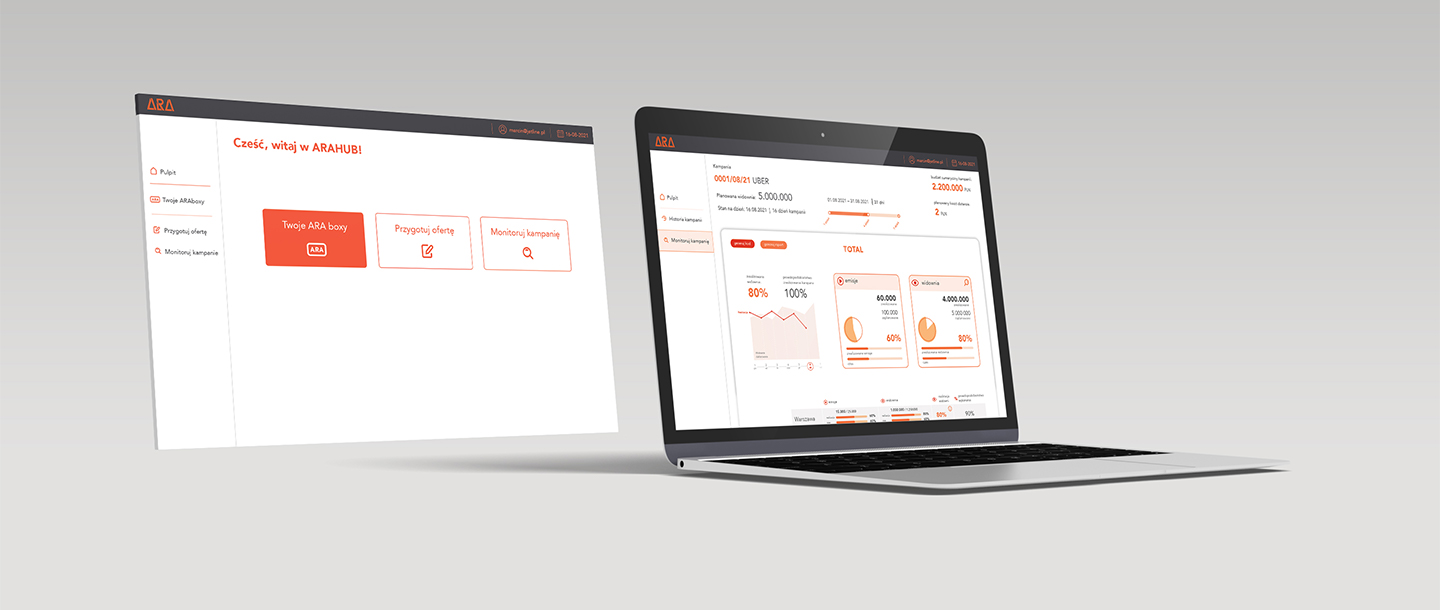
AREAS OF APPLICATION
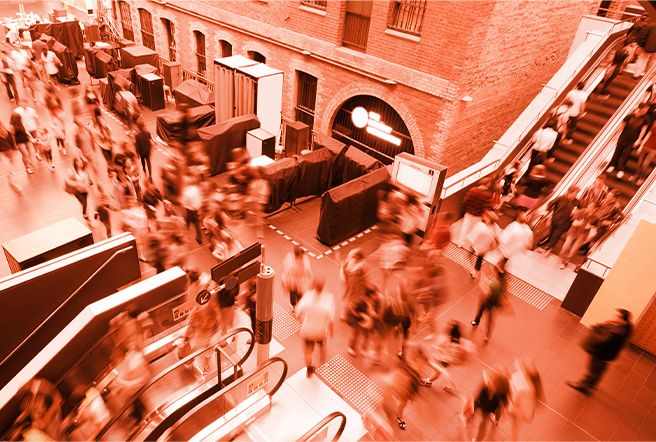
ARA is about people
The growing popularity of digital OOH communication increases the demand for technologies monitoring its effectiveness and audience reactions. The algorithms and concepts building ARA technology are the subject of research by a team of scientists from the AGH University of Krakow. In 2021, pedestrian movement near 18 locations was studied, at different times of day, during different weather conditions, and with different distances of the sensor from the area of people's movement. The goal was to compare the quality of people counting by algorithms with traditional manual counting by researchers.
Asuppliers and owners of digital OOH media
Aadvertisers
Amedia agencies
Amarket reserch agencies
Aretail chains
Atech companies

DATA RELIABILITY
The reliability of sensors and the effectiveness of the ARA algorithm in counting people is as high as 95% during the day and 93% at night.
The growing popularity of digital OOH communication increases the demand for technologies monitoring its effectiveness and audience reactions. The algorithms and concepts building ARA technology are the subject of research by a team of scientists from the AGH University of Krakow. In 2021, pedestrian movement near 18 locations was studied, at different times of day, during different weather conditions, and with different distances of the sensor from the area of people's movement. The goal was to compare the quality of people counting by algorithms with traditional manual counting by researchers.
The study showed that the total numbers of pedestrians detected by ARA sensors and those observed and counted manually by researchers differ only slightly, regardless of whether the study was conducted during the day or at night.